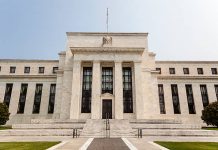- Real GDP grew 4.0% (annualized) in the fourth quarter, in line with consensus expectations. The rebound over the second half of the year from the worst of the pandemic shutdowns in the spring has left economic activity 2.5% below its year ago level.
- Consumer spending grew 2.5% (annualized) in the fourth quarter. Growth was driven by a 4% gain in services spending, led by health care. Spending at food services and accommodation and transportation services both fell on the quarter. Spending on goods fell 0.4%, led by a 0.7% decline in nondurable goods, which was primarily food and beverages. Amazingly, after an 83% annualized gain in durable goods spending in Q3, spending levels were maintained in Q4. Spending on durable goods is 11.9% higher than before the pandemic, while services spending remained 6.8% lower as of the fourth quarter.
- Non-residential fixed investment posted a solid 13.8% gain. Spending on equipment once again led the way, rising 24.9% in Q4. Equipment is another area where spending is above its year-ago levels, up 3.4%. Outlays on intellectual property products rose a healthy 7.5%, and nonresidential structures investment rose 3.0%.
- Residential investment surged 33.5% in Q4, reflecting investment in new single-family housing. Even more impressive than durable goods spending gains, residential investment is now up 13.7% versus a year ago.
- International trade continued to recover. Imports jumped 29.5% and exports rose 22%. Imports have made up more lost ground since the pandemic, and are now only 0.6% below year ago levels, driven by strong gains in imports of goods. Exports, however, remain 11% below Q4 2019 levels, with exports of services still down 24.1%.
- The only major component of GDP to fall in the fourth quarter was government spending, which declined 1.2%. Spending at state and local levels fell (-1.7%) for the third straight quarter. Federal spending was down a more modest 0.5%.
- Inventory restocking contributed one percentage point to GDP growth, boosted by manufacturing and wholesale inventories, while inventories at the retail level declined.
Key Implications
- The American economy continued to recover in the fourth quarter, but at a more modest pace relative to the 33.4 annualized rebound in the third. The evidence of increased Covid-19 infections was clear in consumer spending, with some services areas seeing declines. However, business spending remains resilient and came in stronger than expected. Overall for 2020, the economy contracted at an annual average rate of 3.5%, the worst performance since 1946. However, this masks a story of steep decline and almost-as-steep recovery. After shrinking by 10.1% in the first half (non-annualized) and rebounding by 8.5% in the second, real GDP ended the year 2.5% smaller than it was pre-crisis.
- Activity remained below year ago levels overall, but there were bright spots. The goods versus services divide remains clear. Consumer and business spending on goods and equipment have made impressive gains, and the race for space has driven a new leg up in housing investment. Spending and trade in services is where the recovery has substantial ground to make up.
- The loss of momentum at the end of 2020 is going to hamper growth in the first quarter, which we expect to be more modest than the fourth. That said, it is likely to build through the quarter, as vaccinations ramp up and income supports turn into spending. Indeed, consumers are already spending the $600 impact payments that started getting deposited into accounts in early January. The pieces are falling into place for the second quarter to see a solid pop in economic growth. This performance could be further bolstered by the new administration’s proposed American Rescue Plan (see report).













